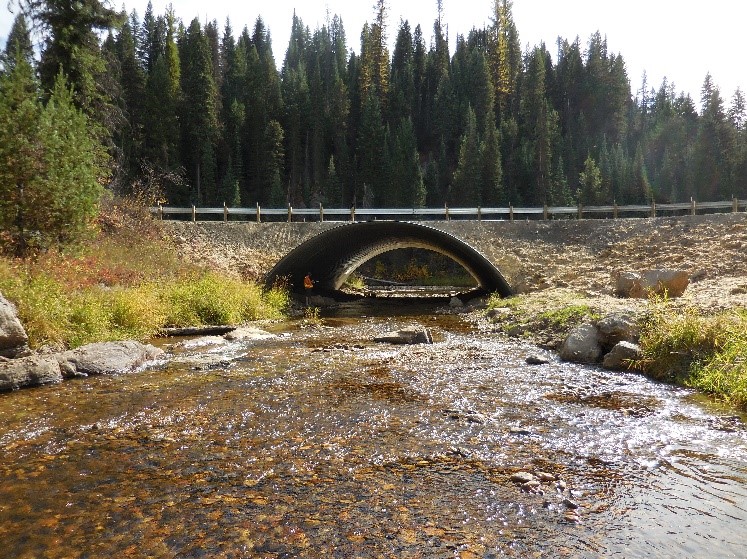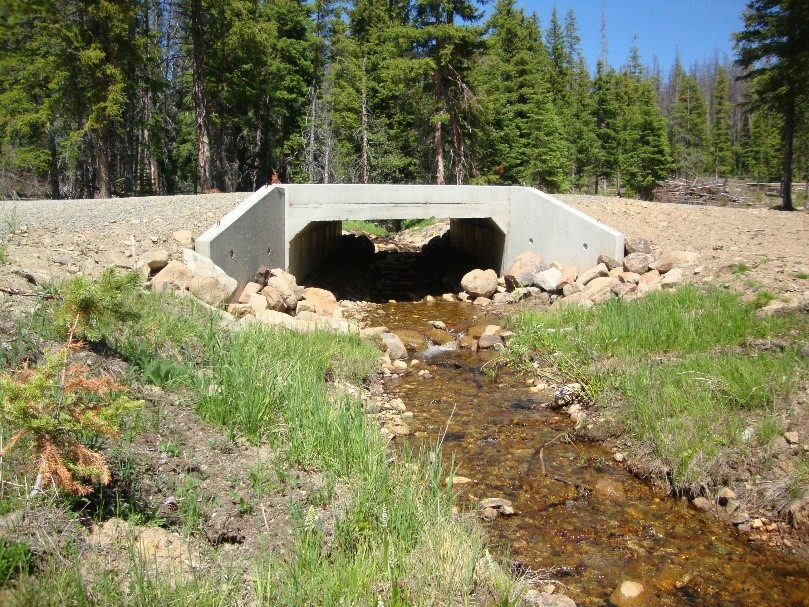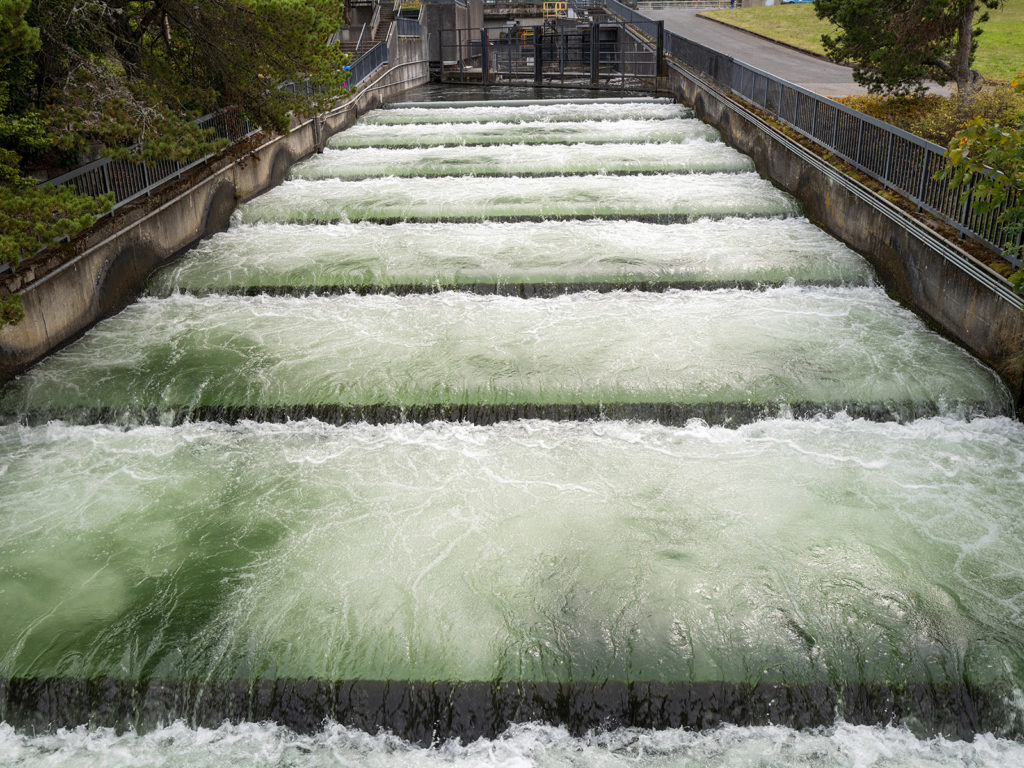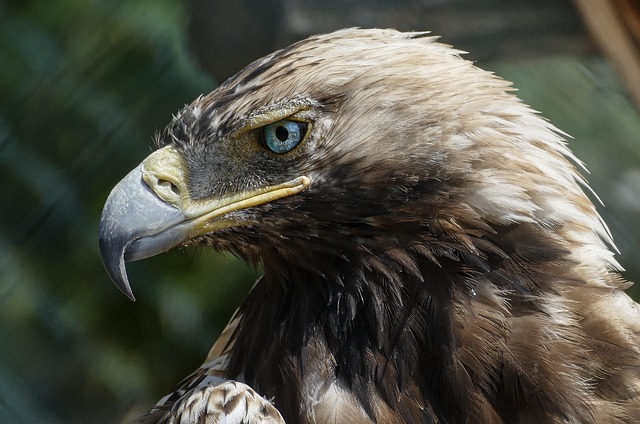Do you ever wonder about the impact of barriers on aquatic species? You know, those obstacles in streams that prevent them from moving freely? Well, these barriers can actually have a significant effect on genetic diversity and migration of aquatic organisms. In fact, this is where Aquatic Organism Passage (AOP) Structures come into play. These structures aim to replace barriers and promote the movement of species within a stream channel.
So, what exactly are these barriers we’re talking about? Height barriers and velocity barriers are the most common types. They can prevent species from migrating and spawning, ultimately affecting their genetic diversity. And here’s the thing – historically, culverts and bridges were designed without considering the impact on aquatic species. But AOP design takes a different approach. It focuses on creating structures that mimic the natural characteristics and function of the stream channel.
AOP structures can be open bottom or closed bottom culverts, depending on the site characteristics. Sometimes, culverts may not be suitable, and that’s when bridges can be used instead. By implementing AOP structures, we can help restore aquatic habitats and preserve fisheries. These structures provide passage for aquatic organisms, allowing them to freely move through different bodies of water. And in a time when climate change stresses are becoming increasingly prevalent, providing passage for all native aquatic and riparian species over all life stages becomes even more important.
Curious to learn more about the importance of Aquatic Organism Passage structures? Stay tuned for our upcoming article, where we’ll dive deeper into the topic and explore the benefits of these structures for genetic diversity and migration of aquatic organisms.
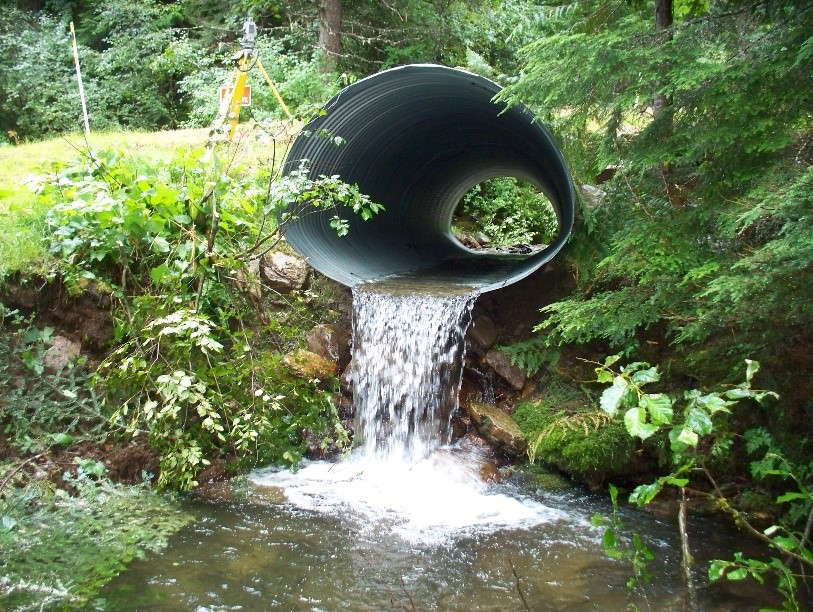
The Importance of Aquatic Organism Passage (AOP) Structures for Genetic Diversity and Migration
Aquatic Organism Passage (AOP) Structures aim to replace barriers that prevent aquatic species from moving within a stream channel. These barriers, such as height barriers and velocity barriers, can disrupt the natural movement patterns of aquatic organisms, impacting their ability to migrate and maintain genetic diversity.
Aquatic Organism Passage (AOP) Structures: A Solution for Removal of Barriers
AOP structures provide a solution to the problem of barriers that impede the movement of aquatic species. These structures can include the removal of dams, roads, or the enlargement of culverts and tide gates to allow for more natural flows through these barriers. By implementing AOP structures, we can restore the natural connectivity of aquatic habitats and promote the free movement of species.
Common Barriers and Their Impact on Aquatic Species Movement
Height barriers and velocity barriers are two common types of barriers that can disrupt the movement of aquatic species. Height barriers, such as dams or weirs, create physical obstacles that prevent fish and other organisms from swimming upstream or downstream. These barriers can fragment populations and limit access to important spawning or feeding grounds.
Velocity barriers, on the other hand, are caused by the excessive speed of water flow in culverts or other structures. Fast-flowing water can be difficult for some species to navigate, especially those that rely on slower currents for migration or reproduction. These barriers can inhibit the natural movement patterns of aquatic organisms and restrict genetic exchange between populations.
AOP Structures and Their Role in Promoting Genetic Diversity
AOP structures play a crucial role in promoting genetic diversity among aquatic species. By removing barriers and allowing for the annual migration and spawning of species, these structures facilitate the exchange of genetic material between different populations. This genetic exchange is vital for maintaining healthy and resilient populations that can adapt to changing environmental conditions.
Without AOP structures, aquatic species may become isolated in fragmented habitats, leading to reduced genetic diversity and an increased risk of population decline. By promoting connectivity and facilitating movement, AOP structures contribute to the long-term survival and sustainability of aquatic ecosystems.
Historical Design of Culverts and Bridges and Their Impact
Historically, culverts and bridges were designed without considering the impact on aquatic species. Many culverts were constructed with high water velocities and limited space, making it difficult for fish and other aquatic organisms to pass through them. This resulted in significant barriers to their migration and limited access to important habitats.
Similarly, bridges were often designed without considering the needs of aquatic species. They were often constructed with spans that were too high, preventing fish from jumping or leaping up the structure. These design flaws had severe consequences for aquatic species, leading to a decline in populations and loss of genetic diversity.
The Focus of AOP Design: Simulating Natural Channel Characteristics
Unlike traditional culverts and bridges, AOP structures are designed with a focus on simulating the characteristics and function of the natural channel. By considering the needs of aquatic species, AOP structures aim to create passage options that mimic the natural conditions of streams and rivers.
This includes designing structures that provide suitable water velocities, depths, and substrate conditions for fish and other organisms to swim through. AOP structures also incorporate features such as resting pools, baffles, and fish ladders to further facilitate the movement of aquatic species and reduce the impacts of barriers.
AOP Culverts: Open Bottom and Closed Bottom Options
AOP culverts are an essential component of aquatic organism passage systems. These culverts can be designed with either an open bottom or a closed bottom, depending on the site characteristics and the needs of the species.
Open-bottom culverts allow for the natural flow of water and sediment, reducing the risk of excessive water velocities and providing a more natural passage option for fish and other organisms. Closed-bottom culverts, on the other hand, are designed to replicate the substrate conditions of the natural stream channel, helping to maintain the integrity of the aquatic habitat.
Replacing Culverts with Bridges in Unsuitable Situations
In some cases, culverts may not be suitable for providing effective passage for aquatic organisms. This may be due to factors such as limited space, high water velocities, or the inability to replicate natural channel characteristics. In such situations, culverts can be replaced with bridges to provide a more suitable passage option.
Bridges offer clear spans that allow fish to swim freely and unimpeded, without the need to navigate through small culverts. By replacing culverts with bridges in unsuitable situations, we can ensure the safe and efficient movement of aquatic species and promote their genetic diversity.
The Benefits of Implementing AOP Structures
Implementing AOP structures brings numerous benefits to aquatic ecosystems. One of the significant advantages is the restoration of aquatic habitats. By removing barriers and promoting connectivity, AOP structures create opportunities for species to access essential spawning grounds, feeding areas, and nursery habitats.
Furthermore, AOP structures play a crucial role in preserving fisheries. By allowing for the natural movement of fish, these structures ensure the continued abundance and diversity of fish populations. This, in turn, supports recreational and commercial fishing activities, benefiting local communities and economies.
Restoring Aquatic Habitats and Preserving Fisheries
The implementation of AOP structures is vital for the restoration of aquatic habitats and the preservation of fisheries. By providing passage options for aquatic species, we can help maintain genetic diversity, ensure the long-term survival of populations, and enhance the resilience of ecosystems.
Restoring aquatic habitats and preserving fisheries are not only essential for the health and well-being of aquatic species but also for the countless other species that depend on them. Aquatic ecosystems are intricately connected to terrestrial ecosystems, and any disruption to their functioning can have far-reaching consequences.
Conclusion: The Significance of AOP Structures for Genetic Diversity and Migration
In conclusion, Aquatic Organism Passage (AOP) Structures are essential for promoting genetic diversity and facilitating the migration of aquatic species. By removing barriers and providing passage options that simulate natural channel conditions, AOP structures restore connectivity, enhance the resilience of ecosystems, and preserve fisheries.
Implementing AOP structures is crucial for restoring aquatic habitats and ensuring the long-term survival of aquatic species. By recognizing the importance of genetic diversity and facilitating the movement of species, we can contribute to the conservation and sustainability of our precious aquatic ecosystems. It is imperative that we continue to prioritize the implementation of AOP structures to protect and preserve these vital habitats and the species that rely on them.
